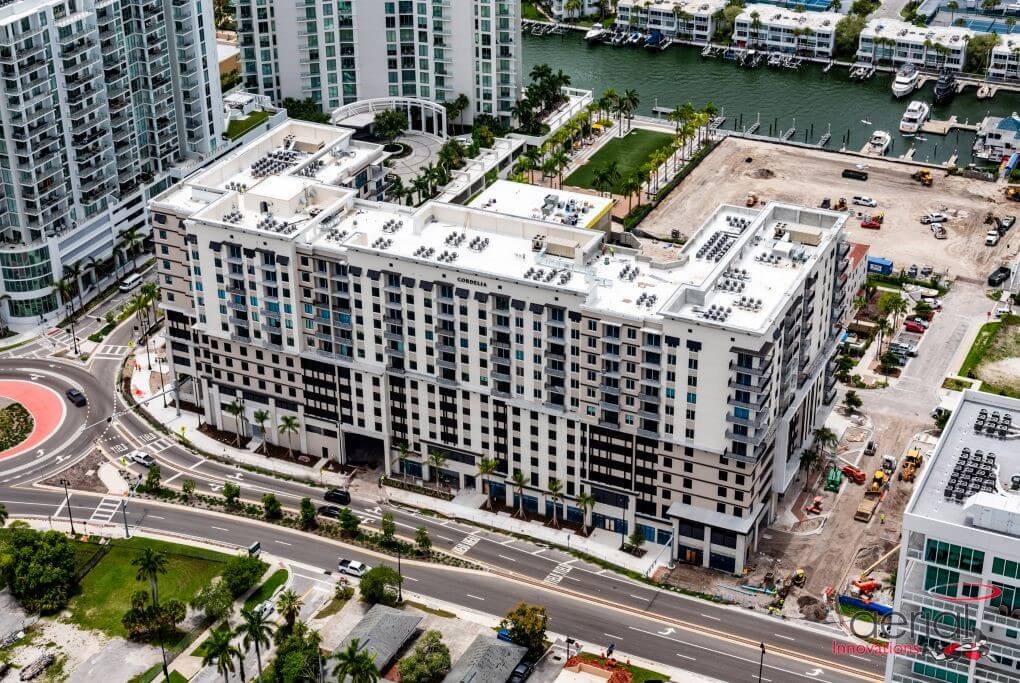
By Eric Brown, Senior Project Manager
In commercial development, speed to market is crucial. I don’t think I’ve ever had a client tell me that it isn’t one of, if not the, top priority. In multifamily construction, this is especially true as the market continues to be saturated while demand is still high. If three new high-rises are going up, but yours will be the last finished, you’re immediately at a disadvantage. Our clients are looking for builders who can meet or exceed the schedule. That said, you’re only as fast as your workmanship will allow you to be. If you complete every floor, but have a punch list a mile long, you didn’t actually meet your schedule. What you gained during installation; you will lose in rework. There are many ways an experienced, skilled construction team can create value in the schedule and deliver a building on time or sooner, and it goes far beyond just working faster. It’s about working smarter. In my opinion, these are the 5 non-negotiables your builder must manage if you want your multifamily project open and available for leasing as soon as possible.
Prepare with Preconstruction
You can’t start running before you put your shoes on, and you can’t start building fast without extensive and thoughtful preconstruction. I’m not talking about estimating, I’m talking about a skilled team of preconstruction experts who collaborate early with the design team to go over every detail that’s drawn to set the project up for success. They’re reviewing building materials, finish options, and unit appliances to make sure the lead times work with the schedule and the costs are in line with the budget. You can’t wait to start procuring materials until the drawings are finished without significant risk to your schedule and efficiency. Preconstruction is the time to uncover all of those details and ensure they’ve been accounted and planned for before the team breaks ground.
Pull Planning Throughout Construction
Pull Planning is an ongoing tool that we use throughout a project. With each pull plan session, we have the opportunity to eliminate gaps in a schedule and make it as efficient as possible. Successfully building a high-rise multifamily tower is all about flow. You need to take the time to map out who needs to start on which floor and when, and make sure every trade has given input and signed off on the order of work. It’s like a giant row of dominoes and pull planning gives you the opportunity to set it up exactly right to avoid delays or set crews up to wait around idle. Pull Planning isn’t new, but I don’t think all GC’s are using it to its full potential. If you’re holding a Pull Plan once and then never touching it again, you’ve wasted your time. The Pull Plan should translate into a schedule, which should be looked at and managed daily, with continuous check-ins and input from the trade partners. If there’s a delay or something needs to be rearranged, you need to be able to act fast to keep those dominos falling.
On-Site Coordination and On-Time Deliveries
To keep progress moving, you have to make sure every trade has exactly what they need to perform their tasks that day. That’s where on-time deliveries are key. It’s not easy to plan for every material to be delivered the exact day it’s to be installed, but it’s vital to keep a project schedule moving as planned. This same attention to planning deliveries down to the minute needs to be applied when scheduling the tower cranes on site. We have to schedule our crane time to the minute – ensuring we’re maximizing the time we’re paying an operator to be on site and working closely with every trade to make sure everyone is getting what they need lifted into place as they need it.
Quality is King
Like I said before, if you’re working fast but sloppy – you’re not working fast at all. A detailed, well-managed quality program is an absolute non-negotiable. The builder has to make sure every trade working on site understands the quality expectations and ensure they’re adhering to the same standards. As work is completed, there needs to be a dedicated team member who is signing off and documenting the quality of the completed work. These quality management efforts will pay off during the punch process to ensure levels can be turned over faster and leasing can begin.
Phased Opening
In this high-demand, active multifamily market, our clients don’t want to wait for their entire building to be completed to begin leasing. A builder who can successfully turn over a building in phases is an asset to developers – but it’s not easy. First and foremost, the construction team needs to communicate clearly with local municipalities to ensure they understand code requirements and can secure inspection dates. They also need to build the schedule around those requirements. If you’re planning to turn over the first 6 floors of a new multifamily tower early, you’ll still need to ensure you’ve installed all life safety systems, elevators, alarms, and evacuation routes for the entire building. Inspections need to be scheduled early so you can ensure you’re ready to turn over the floors as expected. After that, you need a builder who understands how to maintain a safe, clean, and secure site while they continue construction with tenants visiting or moving into the completed floors.
Even with high interest rates and high construction costs, the multifamily market continues to be active. On the high-rise tower we’re completing now in Sarasota, we’re surrounded on three sides by other multifamily developments. We’re seeing interest rates starting to improve and construction costs holding or even coming down in price. I think that will drive even more growth in the market, which will make speed to market as crucial as ever. By selecting the right general contractor who can deliver on these non-negotiables, you can ensure your project will be open to lease in the speed you expect.

